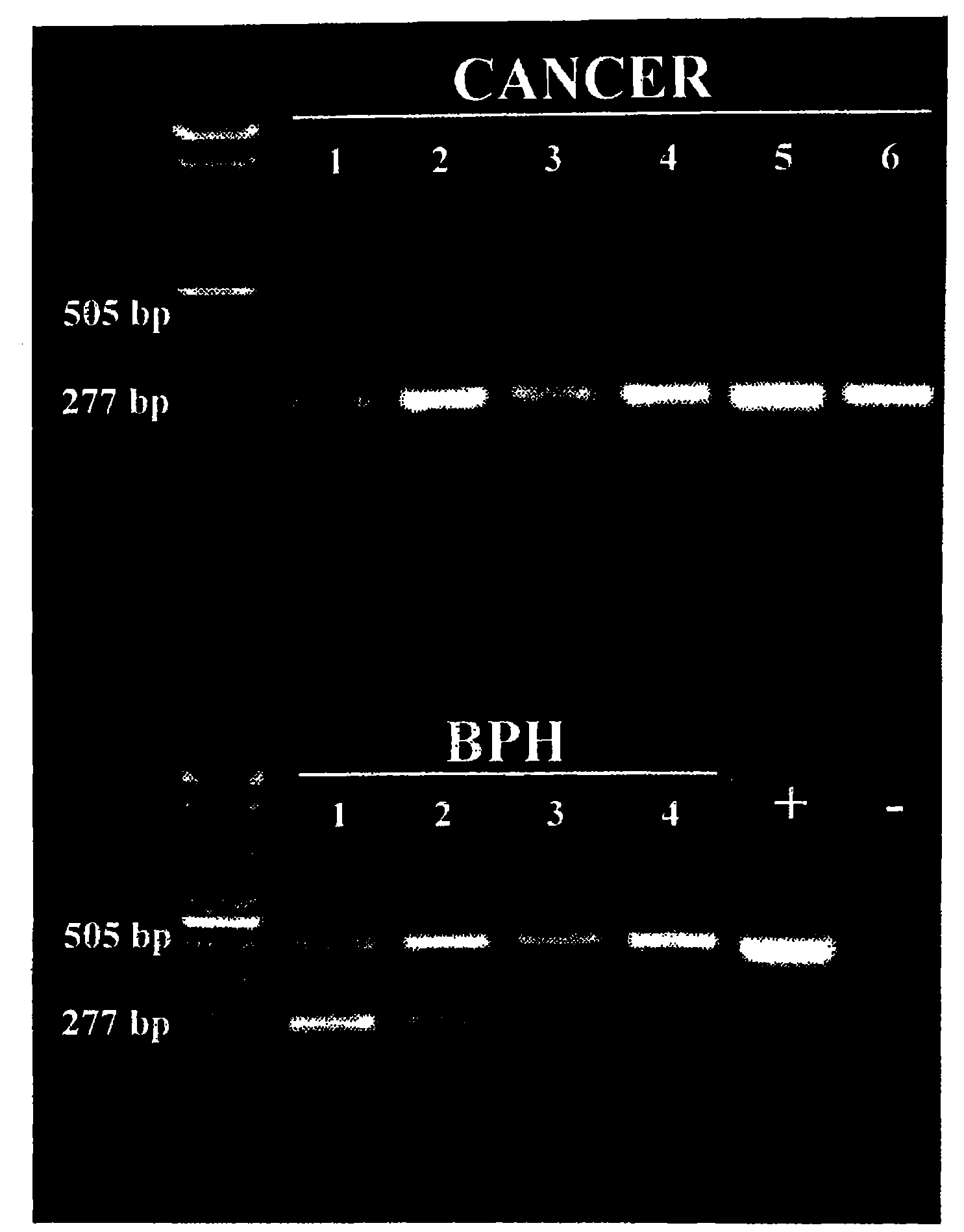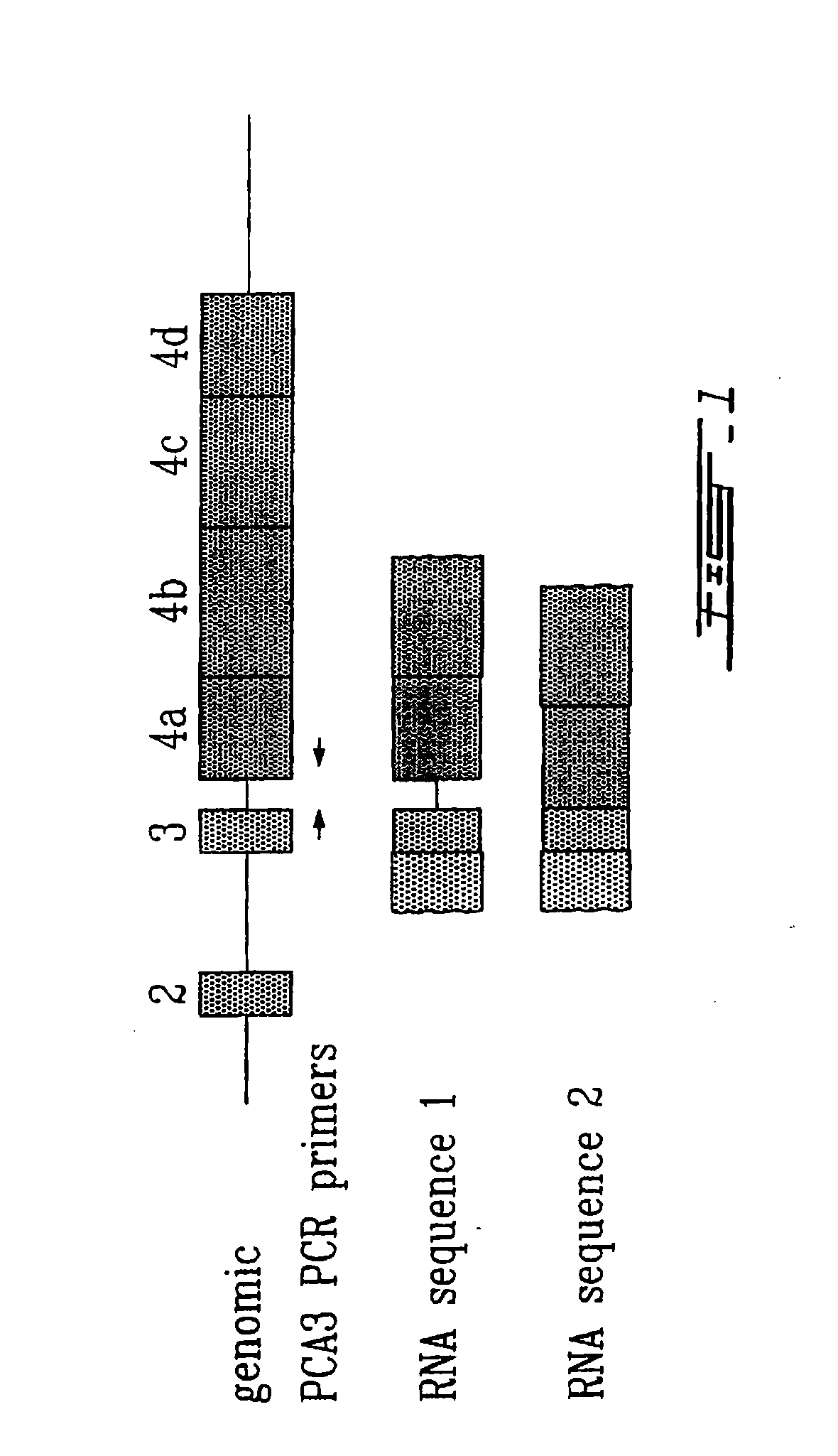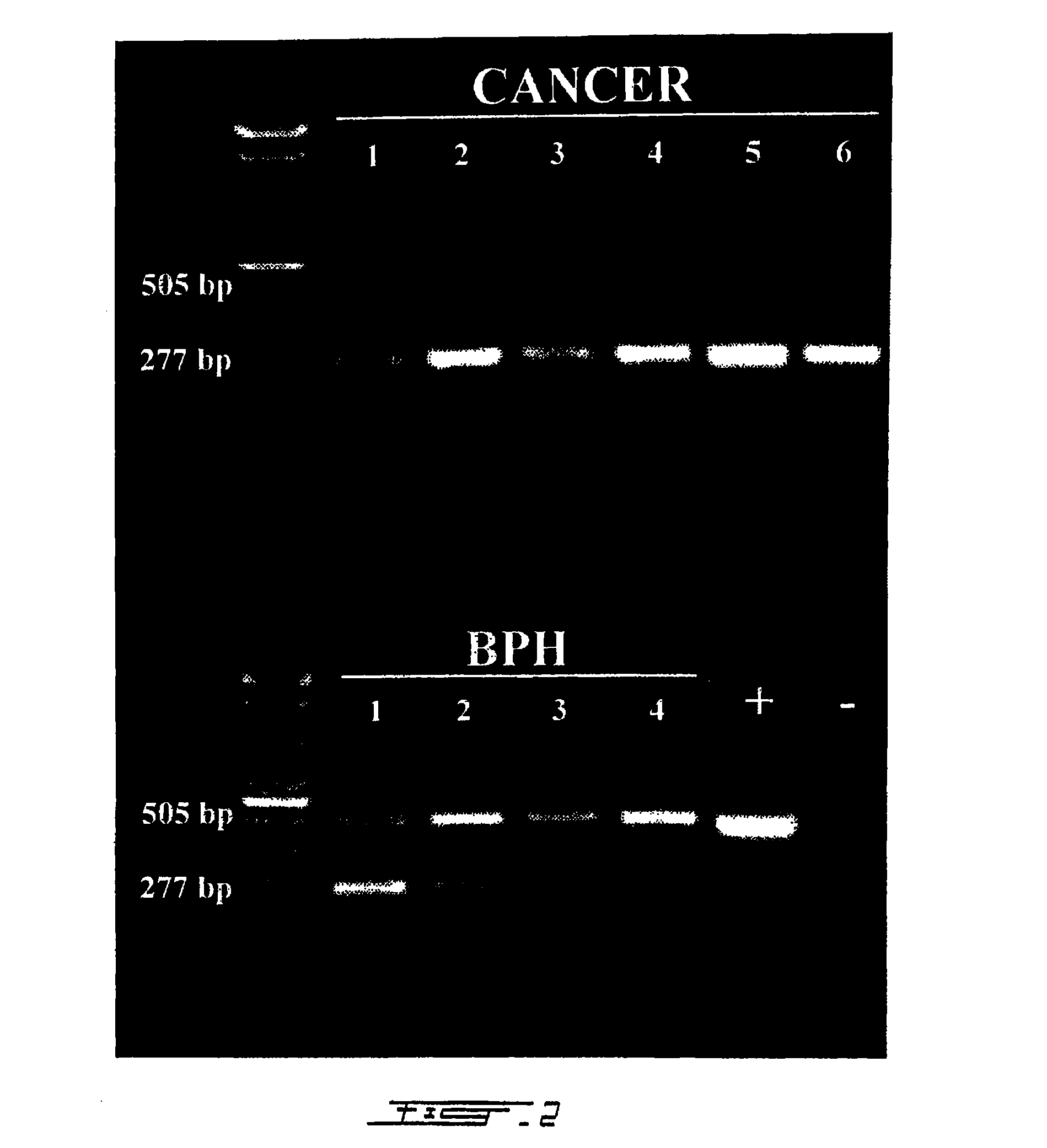PCA3 Messenger RNA Species in Benign and Malignant Prostate Tissues
a messenger rna and prostate cancer technology, applied in the field of prostate cancer, can solve the problems of psa or psm for prostate cancer, slow death of the disease, and limited value of transrectal ultrasound alone, so as to avoid adverse side effects and avoid adverse side effects
- Summary
- Abstract
- Description
- Claims
- Application Information
AI Technical Summary
Benefits of technology
Problems solved by technology
Method used
Image
Examples
example 1
Identification of Differentially Expressed PCA3 mRNAs and Correlation of Their Expression With Prostatic Disease
[0166]PCA3 specific PCR primers were developed in order to analyze PCA3 expression in different samples. To be able to discern between sequences amplified from mRNA (messenger RNA) and genomic DNA, these primers were designed to span an intron, in occurence intron 3. As illustrated in FIG. 1, the PCA3 sense primer lies within exon 3 and the PCA3 antisense primer within exon 4a. Samples to be analyzed for PCA3 expression consisted of frozen tissue chips removed by transurethral resection of the prostate (BPH, 4 patients) or frozen prostates obtained by radical prostatectomy (prostate cancer, 6 patients). Radical prostatectomy samples were processed into frozen sections to specifically select regions containing prostate cancer cells. RNA was extracted from the frozen samples using a liquid phase RNA extraction method (Trizol®). Extracted nucleic acids were subsequently treat...
example 2
Assessment of the Prostatic State of a Patient Using RT-PCR
[0170]Patient samples were obtained and RNA prepared therefrom as commonly known. Reverse transcription mixes were prepared as RT follows: 0.2 μg total RNA+0.6 μg pdN6 (random hexamer primers)+1.25 mM dNTPs+200 U M-MLV reverse transcriptase in 50 mM Tris-HCl pH 8.3, 75 mM KCl, 3 mM MgCl2, 10 mM DTT. The mixture was incubated 1 hr at 40° C.
[0171]4 μl of the RT-reaction of above was mixed in 50 μL of 20 mM Tris-HCl pH 8.4, 50 mM KCl, 2.5 mM MgCl2, 0.5 mM dNTPs, 0.5 μM of each primer and 2.5 U Taq DNA polymerase. For PCR analysis, the amplification was carried out for 35 cycles (1 min each at 94° C., 60° C., 72° C.) followed by a 10 min extension at 72° C. The PCR products were analyzed by conventional agarose gel electrophoresis.
[0172]Although the present invention has been described hereinabove by way of preferred embodiments thereof, it can be modified, without departing from the spirit and nature of the subject invention as...
PUM
| Property | Measurement | Unit |
|---|---|---|
| temperature | aaaaa | aaaaa |
| length | aaaaa | aaaaa |
| binding affinity | aaaaa | aaaaa |
Abstract
Description
Claims
Application Information
 Login to View More
Login to View More - R&D
- Intellectual Property
- Life Sciences
- Materials
- Tech Scout
- Unparalleled Data Quality
- Higher Quality Content
- 60% Fewer Hallucinations
Browse by: Latest US Patents, China's latest patents, Technical Efficacy Thesaurus, Application Domain, Technology Topic, Popular Technical Reports.
© 2025 PatSnap. All rights reserved.Legal|Privacy policy|Modern Slavery Act Transparency Statement|Sitemap|About US| Contact US: help@patsnap.com



